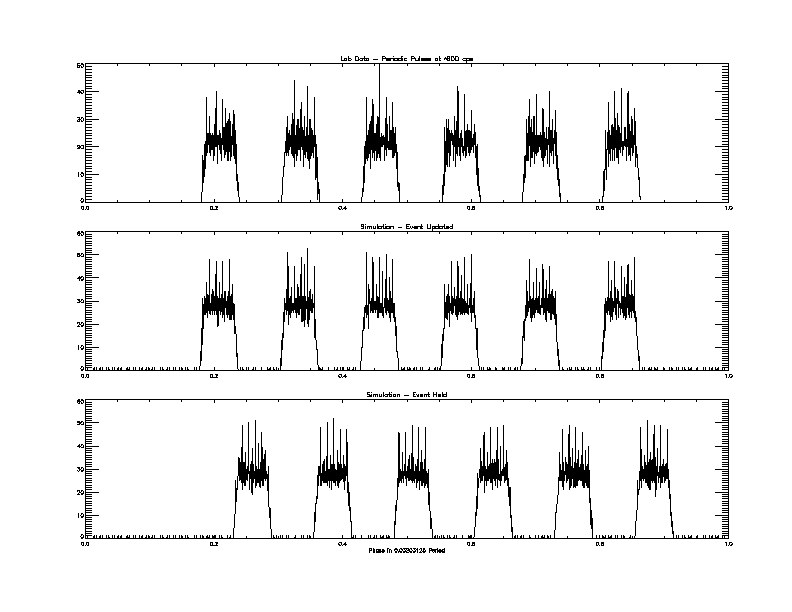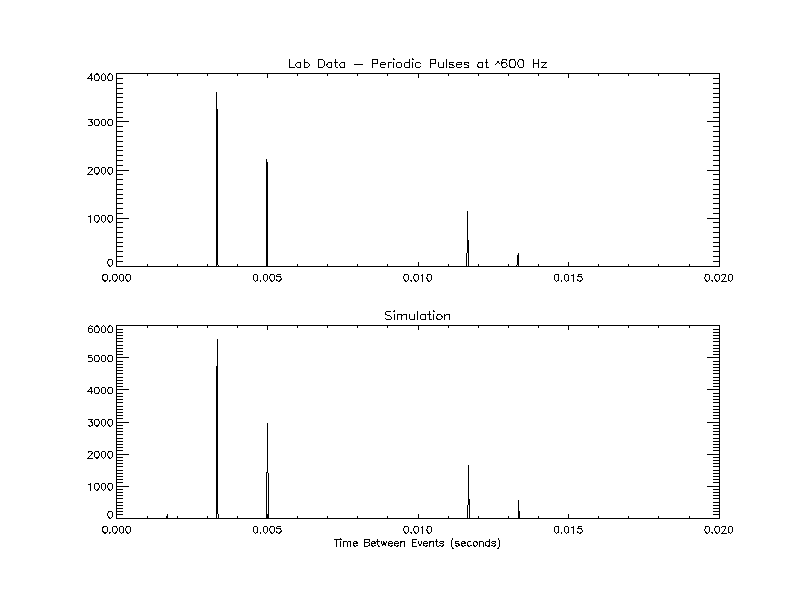HRC FIFO Full Event Timing
In an effort to address the question of how the HRC treats events once
the on-board FIFO is full, tests were performed on the "Proof of
Concept" (POC) electronics in the HRC laboratory using a pulser to
generate events. I have also modified my timing simulation program to
allow the user to select the HRC behavior after the FIFO fills. The
user can select:
- the time information from the event after the FIFO fills is held
- the time information from the event after the FIFO fills is
updated to the most recent event
The figure below present a comparison of the results of the lab data
from periodic pulsations at 600 Hz to simulations run using each of
the behaviors. The data are presented as phase profiles folded on the
0.03203125 s period of the telemetry event groupings with a zero
time selected at the start of a major frame. Bins are 1 HRC clock-tick
long (15.625 µs). The plot is also available as a postscript file.

The top plot in the figure is the lab data, the center plot is the
simulation in which the event time information is updated, and the
bottom plot is the simulation where the event time information is
held.
It is clear from this comparison that the event time information is
not held once the FIFO is filled as had been stated in the past but
rather is updated with the information from the most recent event..
There does not appear to be any evidence for corruption of the time
information that is telemetered. Below is a comparison of the lab data
and a simulation of the time difference between subsequent events. The
data and simulation are essentially identical.

This plot is available as a postscript file.
Dr. Michael Juda
Harvard-Smithsonian Center for Astrophysics
60 Garden Street, Mail Stop 70
Cambridge, MA 02138, USA
Ph.: (617) 495-7062
Fax: (617) 495-7356
E-mail: mjuda@cfa.harvard.edu


